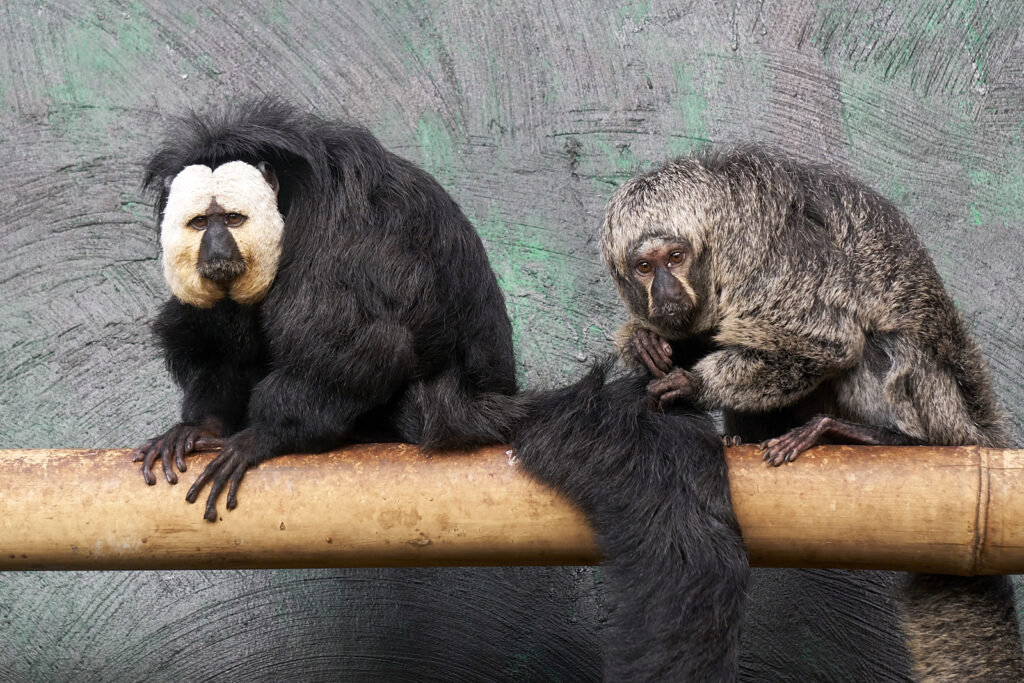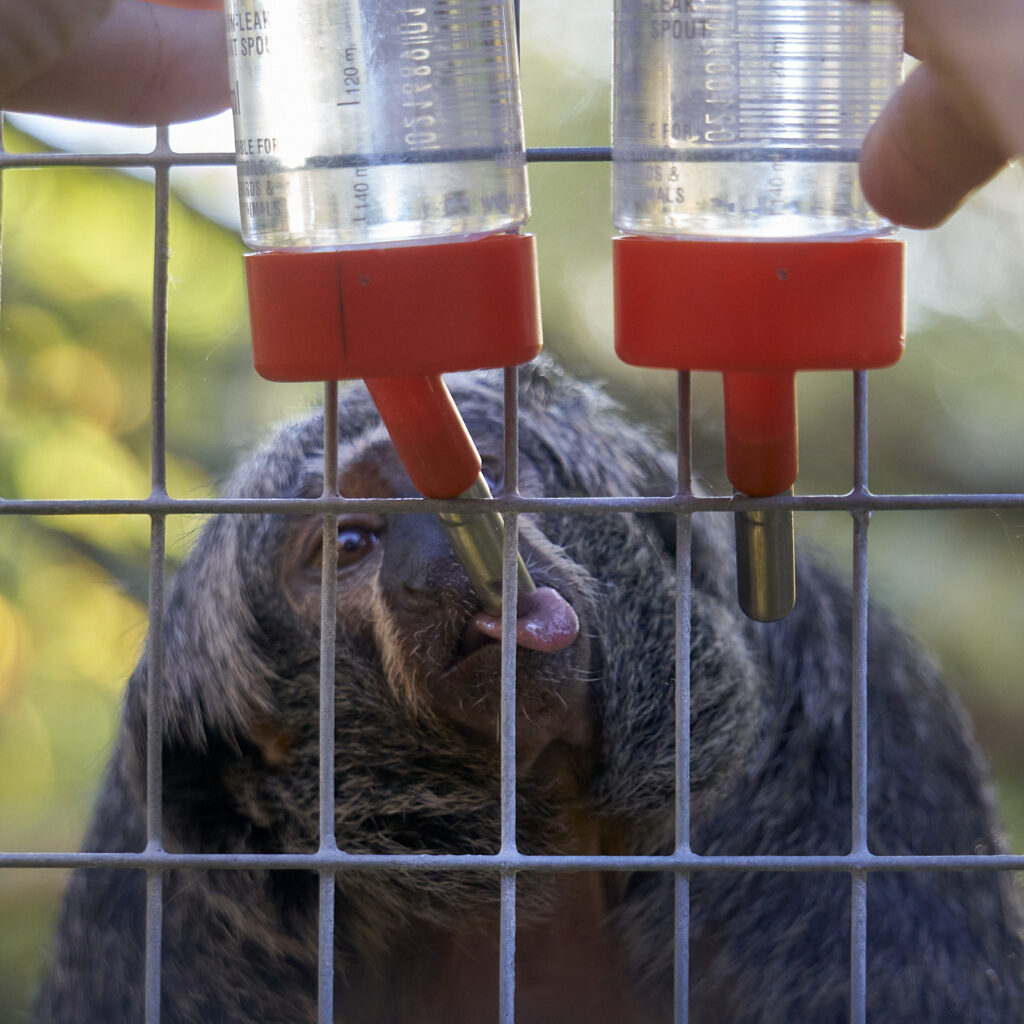Animals / Substances
Animals
The study was conducted on four captive-born white-faced sakis (Pithecia pithecia) kept at AB Furuviksparken (Furuvik, Sweden). Two adult males (Kariakov and Engelbrakt, 17 and 11 years of age, respectively) and two adult females (Lisha and Anita, 14 and 7 years of age, respectively) formed the group.


Tested substances
The following five food-associated carbohydrates and two steviol glycosides were tested:
Food-associated carbohydrates
- Sucrose (CAS# 57-50-1)
- Fructose (CAS# 57-48-7)
- Glucose (CAS# 50-99-7)
- Maltose (CAS# 6363-53-7)
- Lactose (CAS# 63-42-3)
Steviol glycosides
- Rebaudioside A (CAS# 58543-16-1)
- Stevioside (CAS# 578117-89-7)
All substances were of the highest available purity (>99%) and were purchased from Sigma-Aldrich (St. Louis, MO).
Behavioral test
For the determination of taste preference thresholds and relative taste preferences a two-bottle preference test of short duration was employed (Richter & Campbell, 1940). Two 150 ml cylinders with metal drinking spouts were simultaneously presented to the animals and they were allowed to drink from them for two minutes. The two bottles contained a taste solution and water for the determination of taste preference thresholds and two different taste solutions for the assessment of relative taste preferences. Six trials per day and animal were performed, always after feeding schedules and with a gap of approximately 45 minutes was left between each trial. This was necessary to ensure that the animal’s preference for one of the two stimuli was not influenced either by the taste of food remnants, the taste of the used substances in the previous test trial, or fatigue.
In both experiments, each pair of stimuli was presented 10 times to each animal, with the position of the bottles pseudo-randomized to avoid possible position biases. The arrangement of the bottles that were presented simultaneously varied for each animal and for every 10 consecutive trials of a particular substance concentration. Over the course of the 10 trials, each of the bottles was situated five times on the right and five times on the left, without being positioned in one of the two sides for more than two consecutive repetitions. In addition, care was taken that an animal sampled both bottles at least once throughout each trial. The animals were completely accustomed to the procedure and were trained to drink voluntarily from the pair of simultaneously provided bottles.

Determination of taste preference thresholds
For the determination of taste preference thresholds, the animals were given the choice between tap water and defined concentrations of a given food-associated carbohydrate or steviol glycoside dissolved in tap water. Testing for each carbohydrate began at a concentration of 200 mM and continued through 100, 50, 20, 10 mM, etc. until an individual failed to clearly prefer the taste solution over the tap water. Similarly, for the two glycosides, testing started at a concentration of 1 mM and proceeded through 0.1, 0.01 mM, etc. In order to determine preference threshold values more precisely, solutions with intermediate concentrations were used subsequently. Each concentration was presented 10 times to each individual.
The experimental procedure did not strictly adhere to a descending staircase approach. Instead, a pseudo-randomized order of presumably more and less attractive concentrations was employed to ensure the animals’ willingness to cooperate. Nonetheless, the first tested concentration for each of the food-associated carbohydrates and steviol glycosides was 100 mM and 1 mM, respectively. In addition, the experiment did not proceed to test another concentration until the animal completed the ten consecutive trials for the current concentration. This ensured minimizing the possibility of confounding factors influencing the results.
For all the animals, the five carbohydrates were tested in the same order (1. sucrose, 2. fructose, 3. glucose, 4. maltose, 5. lactose). For the two glycosides, rebaudioside A was tested first and stevioside was tested thereafter.
Relative taste preferences
For the assessment of relative taste preferences, all binary combinations of sucrose, fructose, glucose, maltose, and lactose were presented to the animals at equimolar concentrations (sucrose vs. fructose, glucose, maltose and lactose; fructose vs. glucose, maltose and lactose; glucose vs. maltose and lactose; maltose vs. lactose). To determine whether preferences are constant at different concentration levels, three test series were performed at 100, 200 and 300 mM, respectively.